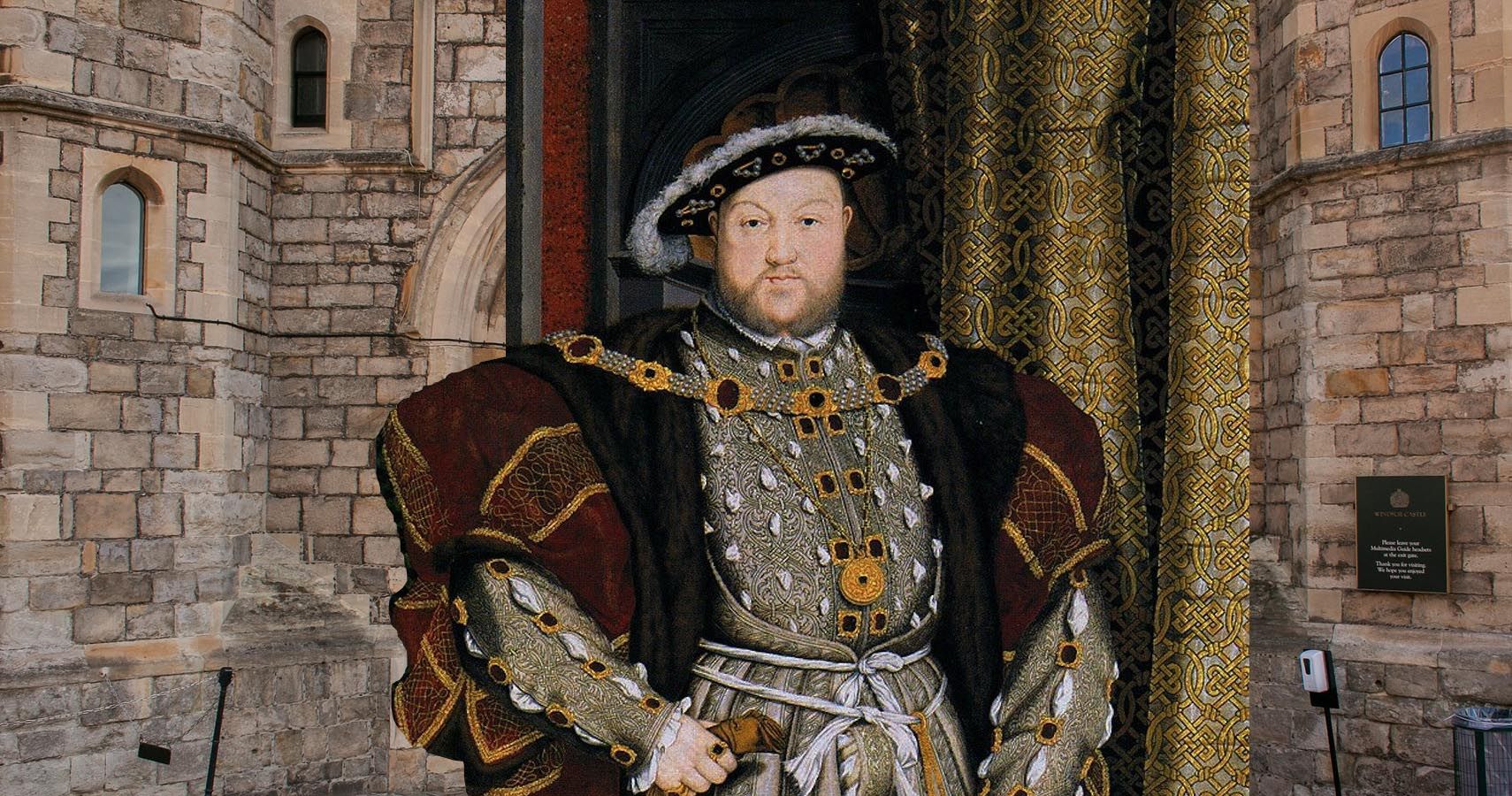Quick Links
Imagine something gold sparking in the mud. At first you think maybe it’s just some trash – but it isn’t. It’s part of the crown of Henry VIII, it’s been lost for over 350 years, and it’s worth $2.7 Million.
Finding buried treasure
This is what happened to Kevin Duckett, but didn’t just stumble upon the lost crown by accident. He is a metal detecting enthusiast, who was sweeping the area at the back of Market Harborough Golf Club for any metal buried there – and he certainly found it. At first he thought it was just some foil, but as he dug out the piece, he quickly realized that he had found something made of real gold.
“The rush of adrenaline and the buzz of excitement started to flow through my body,” Duckett told the Smithsonian. “I was holding what appeared to be a heavy solid gold and enameled figurine.”
The gold piece that Duckett found is a tiny statuette, just 2.5 inches tall. It is believed to have once been the centerpiece of the magnificent Tudor crown. It depicts the fifteenth century king Henry VI as a saint, but it It was originally made either for Henry VII or Henry VIII, and was worn by Henry VIII at Hampton Court for ceremonial events. It was also used at the coronations of all of Henry VIII’s children.
The gold enameled figurine is now with the British Museum in London.
The Lost Crown
Although he recognized that it was something very old and special right away, it took Duckett a long time to determine what he had found. “Over the course of more than three years I must have sent hundreds and hundreds of emails to academics, historians, researchers and experts all over the country trying to get to the bottom of this,” He told the Northamptonshire Telegraph.
A recreation of the crown is currently displayed, as it was long believed that the original was melted down at the Tower of London on the orders of Oliver Cromwell after the British monarchy fell in 1649. The gold would have been used to make coins, and the jewels sold.
The recreation process was an incredibly detailed one that required the coordination of sculptors, goldsmiths, jewelers, and historians. This was documented in a short video from Historic Royal Palaces. It was through watching this video that Kevin Duckett first realized that the gold statuette that he had found could be the centerpiece of the lost crown.
Duckett made the journey to Hampton Court Palace to see the recreation for himself, and described it as seeing the “figurine’s identical twin.”
How the figurine may have survived
Duckett told The Harborough Mail: “I can still hardly believe that I have found this magnificent royal piece in a humble farmer’s field near Market Harborough."
Despite his understandable amazement at finding this valuable piece of history under a tree in a familiar spot, he has a theory about how the statuette may have survived.
Duckett believes that the crown may have been with Charles I when he fled the Battle of Naseby in 1645. The location where he was metal detecting has a bloody history. The entire area was the site of the historic conflict that ended in Charles I’s defeat to Cromwell’s forces – resulting the king’s deposition and execution four years later.
Duckett explained, “there were skirmishes all around that area and troops fled into Market Harborough and Welham, where lots of the retreating soldiers were massacred as they tried to cross the River Welland… They field where I found the figure was at Great Oxendon, which was on the route between Naseby and Market Harborough.”
Adding to the confusion, Charles I’s baggage was looted after the Battle of Naseby, so if the crown was with him, there is a high possibility that it would have been lost that day.
Metal detecting for treasure hunters
This is not the first time that a treasure hunter with a metal detector has found an incredible historical artifact. In 2019 metal detectorist Michelle Vall from Blackpool found a 17th century gold ring that is believed to have belonged to a courtier of James II of England. A private collector from the United States paid about $24,000 for the ring.
Unlike the field that Duckett was searching, Vall stated: "Uncovering the ring was an unforeseen event as myself and my husband were detecting on a field with no particular history of finds in the area.”
For those wondering what lost treasures might be hidden under the ground in their local area, Daniel Bernzweig of metaldetector.com advises an enthusiastic attitude, but also says “don’t let a pocketful of trash on your first time out discourage you.”
Sources: Northamptonshire Telegraph, Smithsonian Magazine, Good News Network, Historic Royal Palaces, Leicestershire Live, BBC, metaldetector.com

